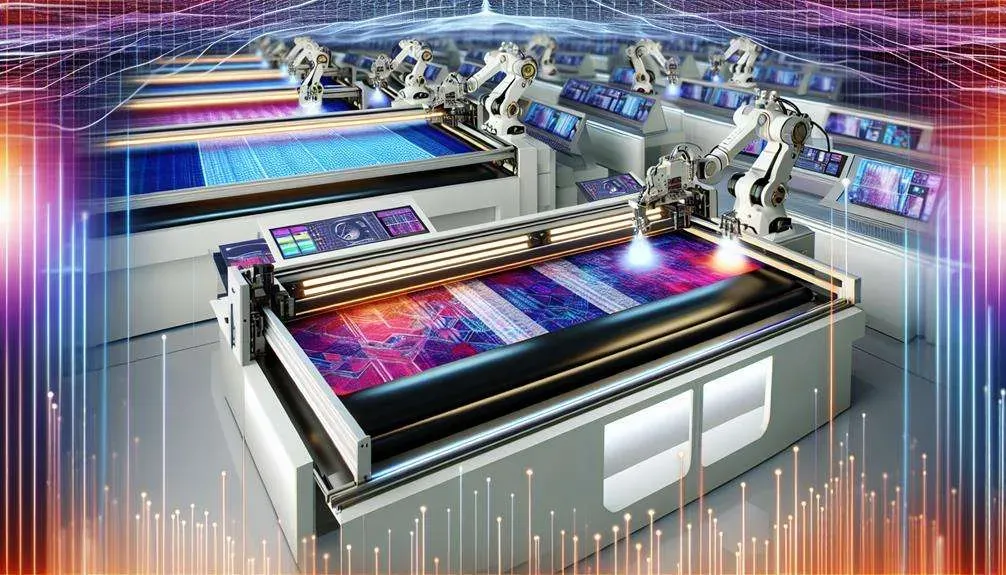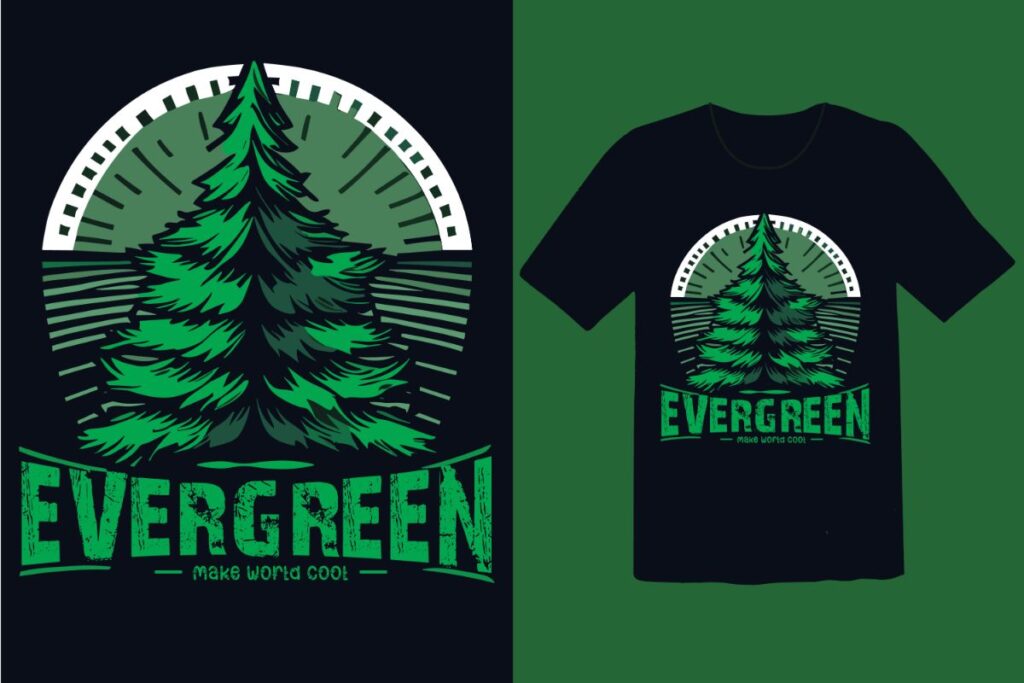DTF Technology, or Direct-to-Film printing, is revolutionizing the landscape of custom apparel by delivering exceptional detail and vibrant color options that cater to diverse fabric types. By leveraging this innovative printing process, businesses can create high-quality designs that are both durable and adaptable, setting them apart in a competitive market. As the demand for personalized products surges, DTF printing benefits such as cost efficiency and sustainability become increasingly important for small to medium-sized enterprises looking to thrive. The growth of the DTF market reflects a shift towards more responsible apparel production methods, with an emphasis on eco-friendly solutions that resonate with today’s conscious consumers. In this article, we will dive deeper into DTF technology, exploring its advantages, potential challenges, and the promising future that lies ahead for custom apparel production.
In the dynamic world of personalized clothing, the advent of Direct-to-Film (DTF) printing signifies a pivotal moment for designers and businesses alike. Known for its capacity to produce intricate patterns and bold colors, this advanced printing technique offers a unique approach to custom garments that distinguishes it from other methods like screen or digital printing. With a focus on versatility and quality, DTF has captured the attention of brands seeking to innovate their product offerings while also addressing sustainability concerns. As the demand for custom apparel continues to rise, alternative printing solutions are becoming crucial, and DTF technology stands at the forefront of this transformation, promising significant growth in the marketplace. In this overview, we will examine how DTF printing is shaping the future of fashion with its myriad benefits.
Understanding DTF Technology: The Printing Revolution
DTF technology, or Direct-to-Film printing, represents a significant evolution in the landscape of custom apparel printing. This innovative method utilizes a specialized film onto which custom designs are printed before being transferred to fabric using heat. The result is highly detailed designs that maintain vibrancy and can be applied to a range of textiles, including cotton and polyester. Unlike traditional printing methods that can limit design complexity, DTF technology allows for a seamless transition from digital design to tangible product, making it a game-changer for designers and businesses in the apparel industry.
Moreover, DTF technology stands out for its flexibility, catering not only to large production runs but also to individual custom orders. This adaptability makes it a favored choice among small businesses and entrepreneurs looking to make their mark in the competitive apparel market. As a burgeoning technology, it supports diverse fabric types and colors, effectively enabling businesses to meet varying consumer expectations for high-quality, bespoke merchandise.
The Remarkable Benefits of DTF Printing
One of the key benefits of DTF printing lies in its ability to produce stunningly vibrant colors and intricate designs. Because the printing is done directly onto a film that is then heat-pressed onto the fabric, the result is a high-quality print that adheres well and withstands wear over time. This durability means that custom apparel made using DTF technology can resist fading even after multiple washes, making it an ideal option for businesses that want to ensure customer satisfaction and repeat purchases.
In addition to its aesthetic advantages, DTF printing showcases versatility in application. Whether it’s creating fashionable t-shirts or promotional hats, the technology supports a wide array of fabric choices, including blends and specialty materials. Brands can cater to niche markets and adapt quickly to changing trends without the need for excessive inventory—significantly lowering the barriers to entry for small to medium-sized businesses.
Sustainability in DTF Apparel Printing
As sustainability continues to be a focal point in consumer decisions, DTF technology is making strides in promoting eco-friendly practices in custom apparel production. Many DTF printing processes now utilize water-based inks that minimize environmental impact, coupled with recyclable films that can be processed without harmful pollutants. This responsible approach helps businesses align with the growing consumer preference for sustainable fashion and apparel, allowing them to market their products as not only stylish but also environmentally responsible.
Implementing DTF printing aligns well with the trend of responsible production. Brands adopting this technology can reduce waste and overhead costs while creating garments that resonate with environmentally conscious shoppers. As more consumers demand accountability from brands regarding sustainability, DTF printing positions companies to leverage their commitment to eco-friendly practices as a unique selling point in a competitive market.
Cost Efficiency of DTF Technology for Small Businesses
For small businesses looking to dive into the custom apparel market without astronomical costs, DTF printing offers a significantly lower barrier to entry compared to traditional screen printing methods. Unlike screen printing, which often requires expensive setups and materials for large runs, DTF allows for minimal startup costs. It makes it economically viable to produce short runs and even one-off designs, providing entrepreneurs and small-scale manufacturers with opportunities to create unique products for their customer base.
Moreover, the ability to adapt quickly to market demand without substantial financial risks leads to greater operational flexibility. Businesses can quickly respond to trends and customer requests, transforming their ideas into finished products without extensive an investment in machinery or materials. This agility not only fosters creativity and innovation but also improves customer satisfaction by allowing for quick turnaround times.
Exploring the Growth of the DTF Market
The DTF printing sector has been witnessing remarkable growth, driven by an acute rise in consumer demand for personalized apparel. Market analysts predict that the DTF market will continue to expand, attributed to the increasing popularity of customized products. As individuals and brands alike seek to differentiate their offerings in a crowded marketplace, DTF technology presents an effective and alluring solution. For small apparel businesses, this trend represents a substantial opportunity for expansion and engagement with new customer segments.
Furthermore, the integration of advanced technology within the DTF printing phase, including innovations that enhance production speed and reliability, underscores the sector’s appeal. As manufacturers focus on improving print quality and operational efficiency, the potential for DTF technology to become the prevailing choice for custom apparel printing looks increasingly promising. Businesses that adopt DTF early on are likely to establish themselves as market leaders, setting the stage for future growth in the evolving custom apparel landscape.
Navigating the Challenges of DTF Printing
While DTF technology offers numerous benefits, businesses must also navigate some associated challenges. One of the primary concerns is the initial financial investment required for DTF equipment and materials. For small businesses, this upfront cost can be a hurdle, especially when compared to lower-cost entry points in traditional printing methods. It is crucial for new entrants to comprehend both the short- and long-term financial implications of DTF printing to strategize effectively.
Additionally, ongoing material costs, particularly for high-quality films and inks, can accumulate, particularly if volume production ramps up. Entrepreneurs need to maintain a keen eye on supplier prices and seek out sustainable sourcing options that help keep costs manageable. Moreover, businesses should prioritize technical training for staff to ensure they can effectively utilize the DTF printing technology and recognize potential pitfalls, enhancing overall output quality and operational success.
Frequently Asked Questions
What is DTF technology and how does it work in custom apparel?
DTF technology, or Direct-to-Film printing, involves printing designs onto a special film that is heat-pressed onto fabric. This process allows for high-quality, vibrant images that can adhere to a variety of materials, making it ideal for custom apparel production. With DTF printing, businesses can offer intricate designs on diverse items, ensuring flexibility and quality in their apparel offerings.
What are the key benefits of using DTF printing for custom apparel?
DTF printing offers several notable benefits, including exceptional image quality, versatility across various fabric types, and cost efficiency for small runs. Additionally, it allows businesses to reduce setup costs compared to traditional screen printing, enhance washability with advanced adhesives, and cater to a growing demand for personalized and sustainable apparel products.
How does DTF technology contribute to sustainable apparel printing?
DTF technology contributes to sustainable apparel printing by utilizing eco-friendly water-based inks and recyclable films, aligning with consumer demands for responsible fashion. This shift to sustainable practices helps businesses lower their environmental impact while still providing high-quality custom garments, thus appealing to a conscientious clientele.
What is driving the growth of the DTF market in the custom apparel industry?
The growth of the DTF market in custom apparel is largely attributed to increasing consumer demand for personalized and high-quality products. As more businesses recognize the versatility and cost-effectiveness of DTF technology, the market is set to expand significantly, enabling companies to thrive by offering diverse customization options to their clients.
What challenges should businesses consider when adopting DTF technology?
Businesses considering DTF technology should be aware of challenges such as the initial investment in specialized DTF printers, ongoing material costs, and the need for technical training to achieve optimal results. Understanding these factors is essential for successfully integrating DTF printing into their custom apparel production processes.
How do recent innovations impact DTF printing in the custom apparel market?
Recent innovations in DTF printing technology, such as automated film feeding and integrated curing processes, enhance production efficiency and print quality. These advancements are helping businesses streamline their manufacturing practices, ultimately leading to better outcomes in custom apparel production, positioning them competitively in the market.
| Aspect | Details |
|---|---|
| What is DTF Technology? | DTF Technology (Direct-to-Film) is a printing process of transferring designs from a specialized film to various fabrics using heat. It offers high-quality, vibrant printing suitable for diverse materials. |
| Benefits of DTF Technology | 1. **Quality and Versatility**: High-detail prints on cotton, polyester, and blends. 2. **Cost Efficiency**: Low setup costs make it ideal for short runs. 3. **Sustainability**: Eco-friendly solutions using water-based inks and recyclable materials. 4. **Market Growth**: High demand for personalized products drives expansion. 5. **Challenges**: Initial equipment costs, ongoing material expenses, and need for technical training. |
| Recent Innovations | Next-gen DTF printers feature automated film feeding and integrated curing processes, enhancing efficiency and print quality. |
Summary
DTF Technology is revolutionizing the custom apparel industry by offering high-quality prints and unmatched flexibility. This innovative method allows businesses to create intricate designs on a wide range of fabrics, catering to evolving consumer preferences for personalized and sustainable products. As the DTF market continues to expand, it presents significant opportunities for small to medium-sized businesses to enter the apparel customization space with lower upfront costs compared to traditional printing methods. Embracing DTF Technology not only positions these companies favorably in a growing market but also aligns them with sustainable practices that resonate with today’s eco-conscious consumers.



